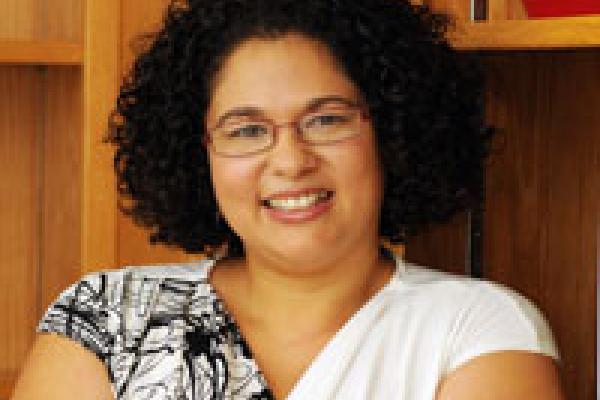
February 12, 2015
4:00PM - 5:30PM
Room 110B, Hale Black Cultural Center, 154 West 12th Avenue
Add to Calendar
2015-02-12 17:00:00
2015-02-12 18:30:00
"Borders and Belonging for Latinas/os in the Midwestern U.S.," by Sujey Vega, Assistant Professor, Arizona State University
Vega is the author of Latino Heartland: Of Borders and Belonging in the Midwest (NYU Press 2015) which is described as follows: “National immigration debates have thrust both opponents of immigration and immigrant rights supporters into the news. But what happens once the rallies end and the banners come down? What is daily life like for Latinos who have been presented nationally as ‘terrorists, drug smugglers, alien gangs, and violent criminals’? Latino Heartland offers an ethnography of the Latino and non-Latino residents of a small Indiana town, showing how the national debate pitted neighbor against neighbor—and the strategies used to combat such animosity. It conveys the lived impact of divisive political rhetoric on immigration and how race, gender, class, and ethnicity inform community belonging in the twenty-first century.” SPONSORED BY LATINA/O STUDIES PROGRAM AND POLITICAL SCIENCE AT OSU.
Room 110B, Hale Black Cultural Center, 154 West 12th Avenue
OSU ASC Drupal 8
ascwebservices@osu.edu
America/New_York
public
Date Range
Add to Calendar
2015-02-12 16:00:00
2015-02-12 17:30:00
"Borders and Belonging for Latinas/os in the Midwestern U.S.," by Sujey Vega, Assistant Professor, Arizona State University
Vega is the author of Latino Heartland: Of Borders and Belonging in the Midwest (NYU Press 2015) which is described as follows: “National immigration debates have thrust both opponents of immigration and immigrant rights supporters into the news. But what happens once the rallies end and the banners come down? What is daily life like for Latinos who have been presented nationally as ‘terrorists, drug smugglers, alien gangs, and violent criminals’? Latino Heartland offers an ethnography of the Latino and non-Latino residents of a small Indiana town, showing how the national debate pitted neighbor against neighbor—and the strategies used to combat such animosity. It conveys the lived impact of divisive political rhetoric on immigration and how race, gender, class, and ethnicity inform community belonging in the twenty-first century.” SPONSORED BY LATINA/O STUDIES PROGRAM AND POLITICAL SCIENCE AT OSU.
Room 110B, Hale Black Cultural Center, 154 West 12th Avenue
Latinx Studies
latinxstudies@osu.edu
America/New_York
public
Vega is the author of Latino Heartland: Of Borders and Belonging in the Midwest (NYU Press 2015) which is described as follows: “National immigration debates have thrust both opponents of immigration and immigrant rights supporters into the news. But what happens once the rallies end and the banners come down? What is daily life like for Latinos who have been presented nationally as ‘terrorists, drug smugglers, alien gangs, and violent criminals’? Latino Heartland offers an ethnography of the Latino and non-Latino residents of a small Indiana town, showing how the national debate pitted neighbor against neighbor—and the strategies used to combat such animosity. It conveys the lived impact of divisive political rhetoric on immigration and how race, gender, class, and ethnicity inform community belonging in the twenty-first century.”
SPONSORED BY LATINA/O STUDIES PROGRAM AND POLITICAL SCIENCE AT OSU.
